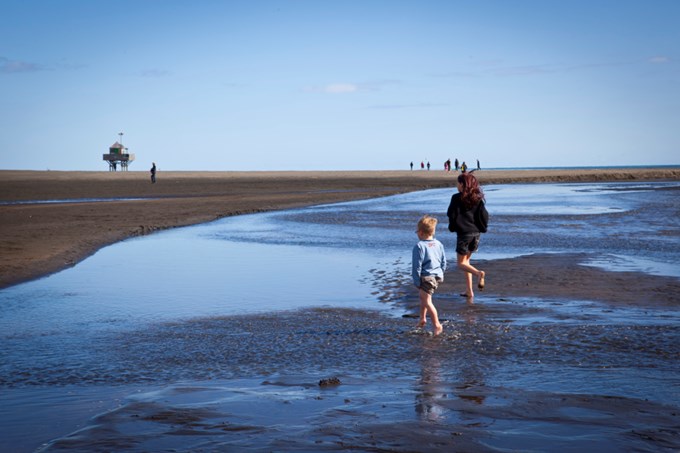Who doesn’t like a dose of vitamin sea? With temperatures climbing higher and higher this summer, beaches, and their promise of cool ocean dips beckon. But west Auckland beach visitors are being reminded to take care of their feet as the sand gets hotter.
More and more Westies are reported to have experienced peeling and blistering soles after being on the beach, as sand temperatures have reached dangerous levels.
Here’re some handy tips to keep your feet cool (or less hot) from burning on the beach, especially black sand beaches like Piha, Te Henga / Bethells Beach and Karekare.
Wear the right kind of shoes (no jandals)
Yes that’s right! Although jandals are a must for Kiwis in summer, they, as well as other open shoes, should not be worn on the beach on a hot summer’s day because they let hot sand in.
Shoes or sand socks that provide a barrier between skin and sand will be your besties when it comes to protecting your feet from blistering while stepping on hot sand.
Create a path using your beach towels
Towels are thinner when compared to the soles of your shoes, but they are a handy choice when you forget your shoes in the car but have a lot of stuff in hand and want to jump into water quickly.
In this case, just roll on some beach towels to step on, and your feet will thank you for that!
Follow the shade
We all love trees, for various reasons! Trees not only give us clean air to breathe but also protect us from sunburns and give our feet relief because of the cooler temperature in the shade.
Otherwise, you can also look for other shadowed spots made by beach umbrellas or tents potentially.
Dig your feet into the sand
Well, for those stubborn barefooters among us, there’s still a trick for you. To prevent burns, you can dig your feet into the sand—make sure your foot is a few inches under the top layers. This will help keep your feet cool.
Find a light-coloured beach
Last but not least, perhaps you could find a light-coloured beach, say Cornwallis, on one of those scorching days. Black sand is made of titanomagnetite – a mixture of titanium and iron and is much more heat absorbent when compared to lighter-coloured beaches.
Stay up to date
Want to stay up to date with all the latest news from your area?
Sign up for Waitākere Ranges Local Board's E-News and get the latest direct to your inbox each month. You can also connect with us on Facebook.


